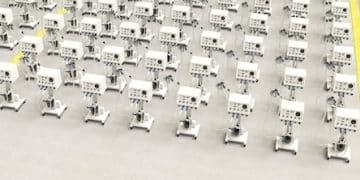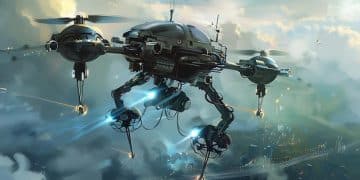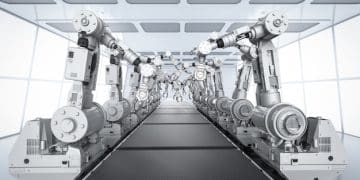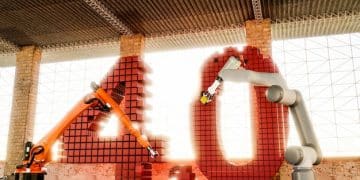Robotics in US Disaster Relief: Saving Lives, Improving Response
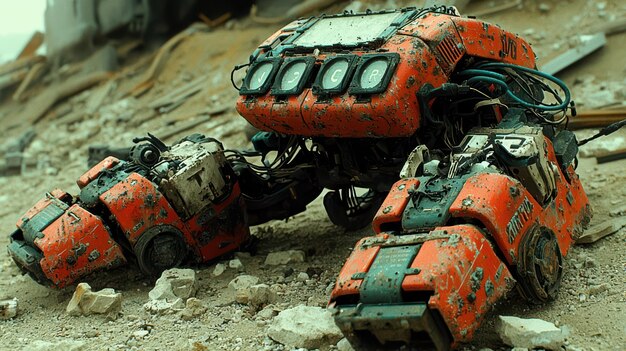
Robotics is revolutionizing US disaster relief efforts by enabling rapid deployment into hazardous zones, providing crucial data, and executing complex tasks that significantly enhance safety, efficiency, and response times in emergencies.
In the evolving landscape of disaster relief, where every second counts and human lives are often at stake, technology plays an increasingly pivotal role. Among these advancements, the strategic deployment of robotics is fundamentally transforming how the United States responds to natural and man-made catastrophes. This evolution marks a significant shift, moving from purely human-centric interventions to a more integrated approach where robotic systems augment and elevate the capabilities of emergency responders.
The Evolving Role of Robotics in Crisis Intervention
The integration of robotics into disaster relief operations in the US represents a monumental leap forward, addressing critical challenges that have historically plagued emergency response. These include the inherent dangers of initial assessments, the laborious nature of search and rescue, and the need for precision in delivering aid. Robots are now enabling access to areas previously deemed too hazardous for human entry, providing invaluable data that can shape rescue strategies and mitigate further risks.
Early disaster response often involves navigating unstable structures, locating trapped individuals, and neutralizing immediate threats. This phase is fraught with peril for human teams. Robotics offers a viable alternative, allowing responders to gain remote situational awareness without exposing themselves to undue risk. From aerial drones surveying vast affected areas to ground robots inspecting compromised buildings, these machines serve as cutting-edge extensions of human observation and intervention.
Enhanced Situational Awareness and Mapping
One of the most immediate benefits of deploying robots in disaster zones is their ability to gather comprehensive data, leading to enhanced situational awareness. Drones equipped with high-resolution cameras and thermal imaging can quickly map affected areas, identifying hot spots, structural weaknesses, and potential survivor locations. This information is critical for designing effective response plans and allocating resources efficiently.
- Thermal Imaging: Detects body heat through smoke or debris, aiding in locating trapped individuals.
- 3D Mapping: Creates detailed topographical maps of affected areas, identifying safe routes and hazardous zones.
- Chemical Sensors: Detects dangerous gases or substances in contaminated environments, protecting human teams.
Ground-based robots, often equipped with robust treads or multi-legged mobility, can navigate through rubble and confined spaces. Their integrated sensors can detect structural damage, assess air quality, and even listen for sounds of life, transmitting this vital data back to incident commanders. This real-time intelligence empowers decision-makers to act swiftly and strategically, prioritizing areas of greatest need.
Improving Safety for First Responders
The safety of first responders is paramount in any disaster scenario. Traditional methods often require human entry into unstable or contaminated environments, putting lives at risk. Robots reduce this exposure by undertaking tasks that are too dangerous for humans, such as entering collapsed buildings, exploring flooded areas, or handling hazardous materials.
This protective layer allows human teams to focus on less perilous, more specialized tasks, knowing that the initial reconnaissance and dangerous tasks are being handled by resilient robotic counterparts. The reduction in responder casualties and injuries translates into a more sustainable and effective long-term relief effort. It also means that valuable human resources are preserved for critical rescue and medical operations.
Types of Robots and Their Applications
The field of robotics for disaster relief is incredibly diverse, with different types of robots fulfilling specific needs based on their design and capabilities. Each platform is engineered to address particular environmental challenges and operational requirements, from airborne surveillance to subterranean exploration. This modularity allows response teams to select the most appropriate robotic tools for the unique circumstances of each disaster.
Unmanned Aerial Vehicles (UAVs or Drones)
UAVs are perhaps the most recognizable robotic tools in disaster relief due to their versatility and ability to cover large areas quickly. They are used for initial assessments, damage mapping, and even delivering small payloads of medical supplies. Their aerial perspective provides an invaluable top-down view of the disaster landscape, which is often difficult to obtain through traditional means.
- Search and Rescue: Quickly scan vast areas for survivors, especially in remote or inaccessible terrain.
- Damage Assessment: Document the extent of structural damage, road blockages, and infrastructure failures.
- Logistics and Delivery: Transport small, critical items like medication or communication devices to isolated areas.
Advanced drone systems can operate in adverse weather conditions, transmitting real-time video and sensor data back to base. Their capacity to rapidly deploy and survey areas after earthquakes, hurricanes, or floods makes them indispensable for understanding the scope of a disaster and guiding subsequent relief efforts effectively.
Unmanned Ground Vehicles (UGVs)
UGVs are designed to operate on the ground, navigating complex and often dangerous environments. These robots range from small, nimble devices that can explore tight spaces to much larger, more robust platforms capable of moving heavy debris. Their sturdy construction and specialized treads allow them to traverse uneven terrain that would be impassable for human teams.
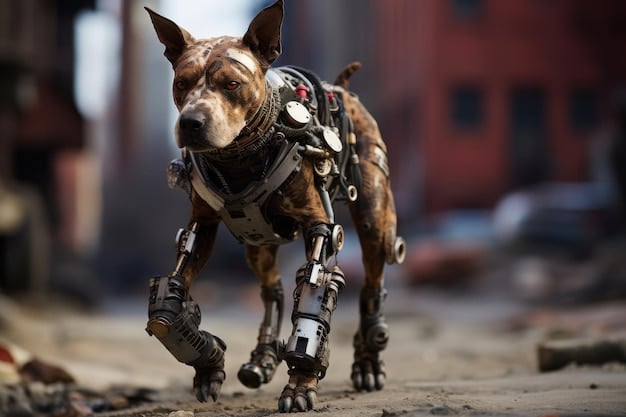
UGVs are crucial for tasks such as urban search and rescue (USAR), where collapsed buildings pose significant risks. They can enter unstable structures to locate trapped individuals, assess structural integrity, and detect hazardous materials, all while keeping human responders out of harm’s way. Some UGVs are also equipped with robotic arms for manipulating objects, moving debris, or even placing sensors in hard-to-reach locations.
Robotic Water and Underwater Vehicles (UUVs and USVs)
In instances of floods, tsunamis, or maritime disasters, robotics extends its reach into aquatic environments. Unmanned underwater vehicles (UUVs) and unmanned surface vehicles (USVs) are deployed for search and rescue in waterlogged areas, for mapping submerged terrain, or for inspecting underwater infrastructure.
UUVs can navigate strong currents and murky waters to locate submerged vehicles or individuals, providing sonar or camera footage of underwater scenes. USVs can survey flooded streets, assess water contamination, and even deliver life rafts or supplies to stranded victims. These specialized robots significantly enhance the capability to respond to water-based emergencies, which are historically challenging due to visibility issues and current dangers.
Integrating Robotics into Disaster Response Frameworks
The effective use of robotics in disaster relief is not merely about having the technology but about seamlessly integrating it into existing response frameworks. This involves developing standardized operating procedures, training human teams to effectively utilize and interpret robotic data, and establishing robust communication protocols. Without proper integration, even the most advanced robots can become underutilized assets.
Collaboration between robotics developers, emergency management agencies, and first responder organizations is vital. This ensures that the robotic solutions being developed are practical, reliable, and directly address the specific needs and challenges faced during disaster scenarios. Furthermore, continuous feedback loops are essential for refining robotic capabilities and adapting them to the dynamic nature of emergency events.
Training and Interoperability
Effective deployment of robotic systems requires extensive training for first responders. This goes beyond simply operating the robots; it includes understanding their limitations, interpreting the data they collect, and integrating their activities into larger response strategies. Training programs often simulate real-world disaster scenarios to provide hands-on experience and build confidence in using these advanced tools under pressure.
Interoperability is another critical aspect, ensuring that different robotic systems can communicate with each other and with human command centers. This enables a unified picture of the disaster zone and facilitates coordinated efforts. Standardized data formats and communication protocols are essential to avoid information silos and maximize the utility of diverse robotic fleets.
Data Analytics and Decision Making
The sheer volume of data collected by robots in a disaster zone can be overwhelming. Therefore, robust data analytics capabilities are crucial for transforming raw information into actionable intelligence. Artificial intelligence (AI) and machine learning (ML) algorithms are increasingly being used to process this data, identify patterns, and highlight critical insights that inform decision-making.
From identifying the safest routes for rescue teams to predicting the spread of wildfires, data analytics derived from robotic deployments significantly enhances the efficiency and effectiveness of disaster response. This shift towards data-driven decision-making represents a paradigm change, moving from reactive responses to more proactive and informed interventions.
Challenges and Future Directions
Despite the immense promise of robotics in disaster relief, several challenges remain. These include issues of cost, connectivity in communication-disrupted zones, power autonomy for prolonged operations, and the technical expertise required for maintenance and repair in the field. Addressing these limitations is essential for scaling up robotic deployments and maximizing their impact.
The future of robotics in disaster relief promises even more sophisticated and autonomous systems. Developments in AI, swarm robotics, and human-robot interaction are set to revolutionize the field further. Imagine a future where self-organizing drone swarms can autonomously assess damage, identify survivors, and even initiate basic aid delivery, all while relaying comprehensive data to human operators.
Technological Advancements and Autonomy
Future iterations of disaster relief robots are expected to exhibit higher levels of autonomy, allowing them to perform complex tasks with minimal human intervention. This includes enhanced navigation capabilities, improved object manipulation, and the ability to make real-time decisions based on evolving environmental conditions. Swarm robotics, where multiple smaller robots work cooperatively, also holds significant potential for covering larger areas more efficiently and with greater redundancy.
The development of more durable and energy-efficient power sources will enable robots to operate for extended periods without needing to return for recharging or refueling. This is crucial for prolonged search and rescue operations or in remote areas where power infrastructure is compromised. Furthermore, research into materials science is leading to the creation of robots that are more resilient to extreme temperatures, water, and impacts.
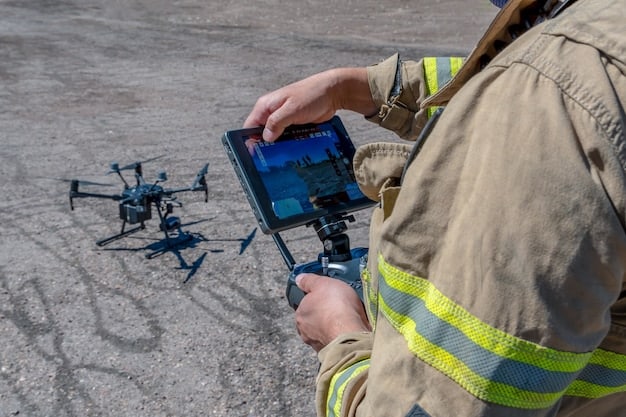
Ethical Considerations and Public Acceptance
As robotic autonomy increases, ethical considerations come to the forefront. Questions regarding accountability, decision-making logic in critical situations, and the potential for misuse need to be thoroughly addressed. Public acceptance of highly autonomous robots in sensitive scenarios like disaster relief is also a significant factor that will influence their widespread adoption.
Open dialogue and transparent development processes are essential to build trust and ensure that robotic deployments always serve the best interests of humanity. The focus remains on robots as tools that augment human capabilities rather than replacing them, emphasizing collaboration and shared responsibilities within the disaster response ecosystem.
The continuing evolution of robotic technologies, coupled with a deep understanding of disaster relief needs, is paving the way for a future where response efforts are not only faster and more efficient but also significantly safer for those on the front lines. The lessons learned from ongoing deployments and the continuous feedback from responders will be critical in shaping the next generation of these indispensable tools.
Economic and Societal Impact of Robotics in Relief
The deployment of robotics in US disaster relief efforts carries significant economic and societal implications beyond immediate operational benefits. By improving the speed and efficiency of response, robots can help mitigate the economic fallout of disasters, reducing property damage and accelerating recovery. Furthermore, the societal impact includes increased safety for emergency personnel and potentially fewer casualties, demonstrating a clear humanitarian benefit.
Investing in robotic technologies for disaster response can also stimulate innovation and job creation within the technology sector. The development, manufacturing, and maintenance of these advanced systems create a new industry ecosystem, fostering economic growth and technological advancement. This long-term perspective highlights robotics not just as a tool for crisis, but as a catalyst for societal improvement.
Cost-Benefit Analysis of Robotic Deployment
While the initial investment in advanced robotic systems can be substantial, a comprehensive cost-benefit analysis often reveals significant long-term savings. By preventing injuries and fatalities among first responders, the human and financial costs associated with medical care and compensation are greatly reduced. Additionally, the ability of robots to quickly assess damage allows for more precise resource allocation, minimizing unnecessary expenditure and speeding up recovery efforts. For instance, accurately identifying structurally sound buildings with robots can save millions in demolition costs.
- Reduced Casualties: Minimizes financial burden of injuries and fatalities among human responders.
- Faster Recovery: Expedites economic recovery by providing quick damage assessments and facilitating rapid restoration of services.
- Optimized Resource Allocation: Ensures aid and equipment are deployed precisely where most needed, reducing waste.
Furthermore, the improved efficiency in search and rescue operations can lead to a higher rate of survival among disaster victims, a benefit that cannot be quantified in monetary terms but holds immense societal value. The ability to return people to their homes and livelihoods faster directly contributes to community resilience and a quicker return to normalcy.
Enhancing Community Resilience and Preparedness
The integration of robotics also significantly enhances community resilience and preparedness for future disasters. By providing more effective tools for reconnaissance and rescue, communities can develop more robust disaster management plans. This leads to better training scenarios, more refined evacuation procedures, and improved public awareness about safety protocols. The presence of advanced robotic capabilities can instill greater confidence within communities that they are better equipped to face future catastrophic events.
Robots can also play a role in long-term disaster preparedness by continually monitoring critical infrastructure, such as bridges, pipelines, and power grids, for potential vulnerabilities. This proactive approach can help prevent certain disasters or at least mitigate their impact by allowing for timely interventions and repairs. The ongoing collection of data by autonomous systems provides valuable insights into vulnerabilities that might otherwise go unnoticed, strengthening overall community safeguards.
The Human-Robot Partnership in Action
The most effective disaster relief operations increasingly rely on a symbiotic human-robot partnership. This model leverages the strengths of both, combining human cognitive abilities, empathy, and adaptability with the robots’ endurance, precision, and ability to operate in hazardous environments. It’s not about replacing humans, but empowering them with advanced tools to achieve what was previously impossible or too dangerous.
In many scenarios, humans guide and oversee robotic missions, interpreting data and making critical decisions based on the information relayed by their mechanical counterparts. This collaboration extends to the maintenance and repair of robots in the field, ensuring that these vital assets remain operational when needed most. The synergy between human ingenuity and robotic capability creates a more resilient, effective, and humane response to crises.
Case Studies and Real-World Examples
Numerous real-world disaster events in the US have showcased the transformative power of robotics. Following the devastating hurricanes that have impacted the US coastlines, drones were deployed to map flooded areas and assess structural damage, providing critical information for search and rescue teams. In urban settings, after building collapses, ground robots have been instrumental in searching for survivors in unstable debris fields, reducing the risk to human rescuers.
Robots have also been utilized in less conventional ways, such as inspecting damaged nuclear power plants after incidents or navigating through smoke-filled tunnels to locate victims. Each deployment provides valuable lessons learned, refining operational procedures and informing future robotic designs. These real-world applications underscore the practical and undeniable impact robotics has on saving lives and improving response times.
The ongoing refinement of these technologies, coupled with a growing understanding of how best to integrate them into emergency protocols, ensures that robotics will continue to be a cornerstone of disaster relief efforts in the US. Their role is set to expand, promising an even safer and more efficient future for communities facing the unthinkable.
| Key Aspect | Brief Description |
|---|---|
| 🚀 Rapid Deployment | Robots enable quick access and assessment of hazardous zones, significantly cutting down initial response times. |
| 🛡️ Enhanced Safety | They perform dangerous tasks, reducing risks for human first responders in unstable or contaminated environments. |
| 📊 Data & Intelligence | Robots gather crucial real-time data through advanced sensors, aiding in superior situational awareness and decision-making. |
| 🔄 Continuous Innovation | Ongoing advancements promise greater autonomy, endurance, and specialized capabilities for future disaster scenarios. |
Frequently Asked Questions About Robotics in Disaster Relief
▼
The most common types include Unmanned Aerial Vehicles (UAVs or drones) for aerial surveillance and mapping, Unmanned Ground Vehicles (UGVs) for navigating dangerous terrestrial environments and search and rescue, and sometimes Unmanned Underwater Vehicles (UUVs) for aquatic disasters. Each is selected based on the specific needs of the disaster scenario.
▼
Robots enhance safety by taking on hazardous tasks, such as entering unstable buildings, exploring contaminated zones, or approaching dangerous materials. This reduces human exposure to risks like structural collapse, hazardous substances, or fire, allowing human teams to perform safer, more specialized duties.
▼
Yes, robots are increasingly used beyond immediate response. They can assist in assessing long-term damage for recovery planning, monitoring repaired infrastructure, and even in debris removal. Their data collection capabilities support informed decisions throughout the entire disaster lifecycle, from initial impact to long-term rebuilding.
▼
Key challenges include ensuring robust communication and connectivity in disrupted areas, extending battery life for prolonged operations, overcoming the high cost of advanced systems, and providing specialized training for responders. Interoperability between diverse robotic platforms is also crucial for seamless operations.
▼
No, robots are not replacing human first responders. Instead, they serve as powerful tools that augment human capabilities. They allow responders to assess situations more safely and efficiently, gather critical data, and focus on more complex tasks that require human judgment, empathy, and adaptability. It’s a partnership.
Conclusion
The integration of robotics into US disaster relief efforts marks a profound shift in how the nation confronts crises. By enhancing safety for first responders, drastically improving response times, and providing unparalleled situational awareness, robotic systems are saving lives and mitigating the devastating impacts of natural and man-made disasters. As technology continues to evolve, the capabilities of these robotic assistants will only grow, promising a future where humanity is even better equipped to face and overcome extraordinary challenges.
